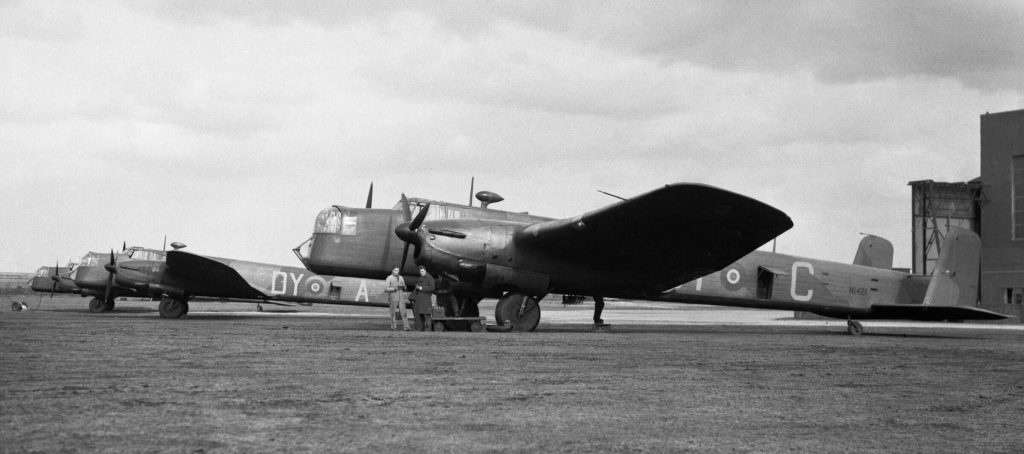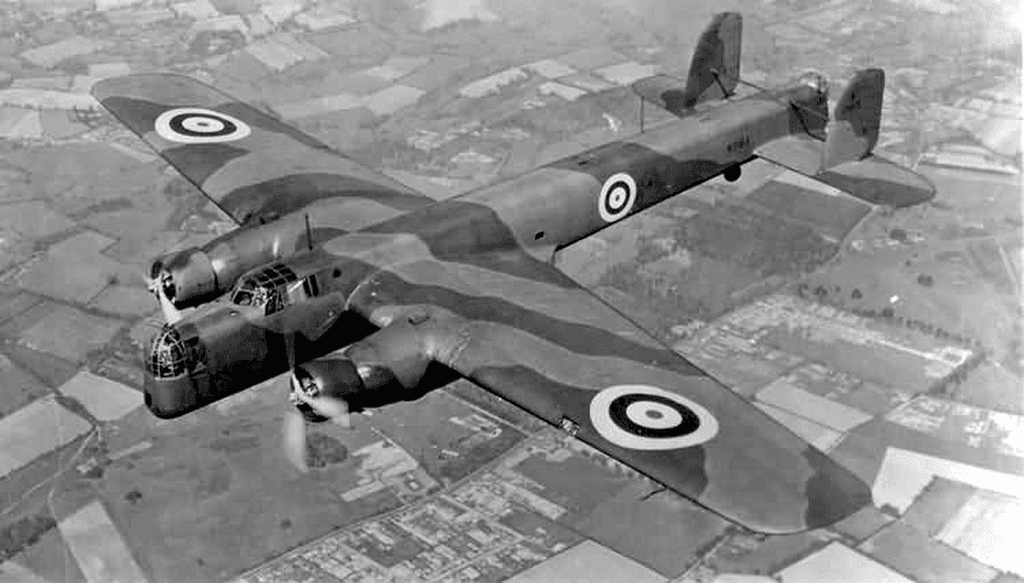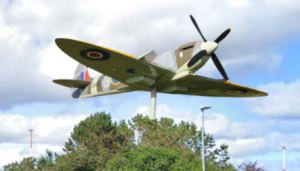Site 6. Whitley Bomber T4296
On the evening of 24th April 1941 an Armstrong Whitworth Whitley aircraft of No. 612 Squadron took off from RAF Wick on a routine operational patrol over the North Atlantic. It left the runway but instead of climbing away towards its patrol area it continued to circle the airfield. The weather was fair with a gentle 10 – 15 mph breeze from the northeast, giving no cause for concern.

The control tower was unable to make wireless contact with the aircraft which continued to circle the airfield for almost an hour before finally attempting to land again at 0055 hours.
It is believed that the aircraft was experiencing technical difficulties and as it descended on its approach to the airfield one of its wings clipped the chimney of the two storey accommodation block on the Town and County Fever Hospital on the outskirts of the town.
The wing and engine were ripped off and smashed into the building, starting a fire there, the remainder of the aircraft crashing into an adjoining field 60 yards (55m) further on. As the aircraft hit the ground one of the five bombs it had been carrying exploded, killing all six of the crew on board.
The accommodation block of the hospital was totally destroyed by the fire and tragically claimed the lives of two of the hospital’s domestic staff who were asleep in the attic dormitory. Another building within the hospital was also damaged but no one else was injured, however the hospital had to be evacuated whilst the fire was brought under control.
Several eye witnesses at the time including civilians, Coast Guard and A.R.P, reported the incident to the Police who were immediately at the scene and informed the Air Controller at RAF Wick about the incident, reporting that the aircraft was on fire and there had been an explosion and four live bombs were still on board.
A report of the fire at the hospital was published in the John O’Groat Journal the following week, but wartime censorship precluded any mention of the bomber that had crashed.
In 1998 a commemorative plaque to remember those who perished in this terrible accident was unveiled at the entrance to the hospital.
In remembrance of those killed during the crash of T4296 on April 25th 1941
Flying Officer Charles Chamberlin Macculloch Watt (90546) Royal Air Force – Pilot
Flight Sergeant Francis John Milne (817033) Royal Air Force – Pilot
Sergeant Henry Edward Smith (748709) Royal Air Force – Air Observer
Sergeant Leslie Joseph George Lockwood (906101) Royal Air Force – Wireless Operator
Sergeant William MacPherson (971383) Royal Air Force – Wireless Operator
Flight Sergeant Alexander Maitland (817310) Royal Air Force – Air Gunner
Miss Johanna Sinclair Bain – Hospital Domestic Staff
Miss Mary Jane Waters – Hospital Domestic Staff



